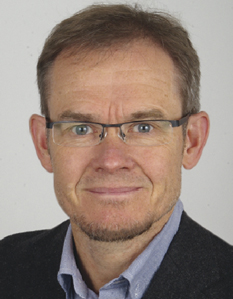< Back to All Events
|
Theory and practice of controlled electron channelling contrast imaging
 Speaker Name
Speaker Name
Dr. Stefan Zaefferer

November 6, 2025

04:15 PM
|SPEAKER BIO
Stefan Zaefferer studied physical metallurgy and metal physics at the TU Clausthal in Germany. His PhD thesis with the title "Development and application of a computer software for the determination of deformation mechanisms in materials with hexagonal crystal structure by transmission electron microscopy? was carried out at the TU Clausthal as well. After this, he went for a 2.5 years post doc time at Paris and a 1.5 years time at Kyoto. During this time he focussed mainly on the deformation and recrystallization mechanisms of metals with fcc crystal structure by TEM. At the same time he developed the computer program TOCA "Tools for orientation determination and crystallographic analysis" an on-line TEM-Program for indexing of diffraction patterns and microscope control "virtual microscope?. Since 2000 he is head of the research group "Microscopy and Diffraction? at the MPIE. In this time he has mainly dealt with the development of electron diffraction techniques in SEM and TEM and applied these methods to the investigation of various metallic and intermetallic materials. Currently, SZ tries to focus his research activities on projects where environmental protection and sustainability play an important role, e.g. materials for thermal solar power plants, photovoltaic materials, and light, abundant and recyclable structural materials.
In 2009 he passed his habilitation at the RWTH Aachen and teaches there, together with colleagues from the RWTH and the MPIE, a self-developed master course "Microstructures, Microscopy and Modelling?. At the same time he teaches the class "Electron diffraction methods in the SEM? at the MPIE as well as a guest professor at various universities.
|ABSTRACT
ECCI is a powerful SEM-based technique to observe and analyse extended crystallographic defect like dislocations, stacking faults, grain boundaries and others with a contrast close to that of transmission electron microscopy, but on bulk samples. This allows, for example, a statistically meaningful observation of lattice defects in materials, samples can be much larger than in TEM, or the observation of materials processes like deformation, thermal treatment, chemical reactions in a much easier way than in TEM. Important for cECCI is the controlled illumination of the crystal lattice. This is achieved by combination of orientation-measurement by EBSD and a computer program TOCA which enables the on-site determination of diffraction conditions for optimum visibility of defects.

